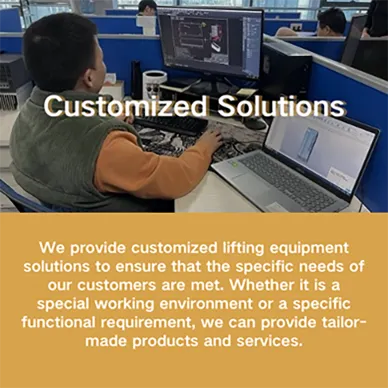over head gantry
Understanding Overhead Gantries A Comprehensive Overview
In the world of engineering and construction, the term overhead gantry refers to a specialized structure designed for the purpose of lifting and moving heavy loads. These robust frameworks play a crucial role in various industries, including manufacturing, shipping, and construction. In this article, we will explore the features, functions, applications, and advantages of overhead gantries, as well as the considerations for their installation and maintenance.
What is an Overhead Gantry?
An overhead gantry is a type of crane that is characterized by its horizontal support beams, which are elevated above the ground on vertical legs. The design often resembles a bridge, allowing for the movement of loads beneath it. These units can be powered by electric or hydraulic systems, and they utilize cables or chains to hoist heavy materials. Overhead gantries are distinguished from other cranes by their horizontal structure, which offers substantial lifting capacity and enhanced maneuverability.
Key Features
One of the most significant features of an overhead gantry is its ability to provide vertical and horizontal movement. This dual functionality allows operators to precisely position heavy loads, making it ideal for tasks that require careful placement. The gantry can be operated from a control panel or via remote control, increasing safety and efficiency. Additionally, many models come with various attachments, such as hooks, slings, and forks, enabling them to handle different types of materials.
Applications
Overhead gantries are incredibly versatile and can be found in a wide variety of applications. In manufacturing, they are used to transport materials along assembly lines, ensuring seamless production processes. In warehouses, they facilitate the movement of pallets and heavy goods, optimizing space and improving workflow. In construction, overhead gantries are essential for lifting and placing structural components, such as steel beams and precast concrete elements.
Moreover, in the shipping industry, these cranes are commonly employed in ports and docks to load and unload shipping containers. Their ability to move large, heavy items efficiently makes them indispensable in logistics operations. In response to growing automation trends, some overhead gantries are now equipped with advanced technology such as sensors and robotic arms, further enhancing their capability and efficiency.
over head gantry

Advantages
The adoption of overhead gantries comes with numerous advantages. Firstly, they maximize space utilization by allowing vertical storage of materials, which is particularly beneficial in environments with limited floor space. Secondly, their ability to move loads with precision reduces the risk of damage to goods and enhances safety for workers.
Additionally, overhead gantries can significantly increase productivity. By streamlining the transportation of materials, they minimize downtime and ensure that projects stay on schedule. Their robust construction enables them to handle immense weights safely, which is crucial in heavy-duty applications.
Installation and Maintenance Considerations
While installing an overhead gantry can greatly improve operational efficiency, it's essential to consider the specific requirements of the facility. Factors such as the ceiling height, floor capacity, and the load specifications must be evaluated. Proper installation by qualified professionals is critical to ensuring safety and functionality.
Regular maintenance is also paramount to the longevity of the equipment. Routine inspections can help identify wear and tear, ensuring that the gantry operates optimally and safely. This can include checking the integrity of structural components, testing the lifting mechanisms, and ensuring the control systems are responsive.
Conclusion
Overhead gantries are vital tools in various industries, offering unmatched capabilities for lifting and moving heavy loads. Their unique design provides efficiency, safety, and versatility, making them an indispensable asset in modern manufacturing, construction, and logistics operations. As technology continues to evolve, we can expect overhead gantries to become even more sophisticated, further enhancing their role in the industrial landscape. Investing in these structures not only improves operational efficiency but also contributes to a safer working environment.
-
Unlock Seamless Relocation with Our Heavy Equipment Moving ExpertiseNewsJun.06,2025
-
Unleash Unrivaled Flexibility with Our Adjustable Gantry CraneNewsJun.06,2025
-
Unleash Heavy-Duty Efficiency with Our Industrial Gantry Crane SolutionsNewsJun.06,2025
-
Revolutionize Steel Handling with Our Magnetic Lifter RangeNewsJun.06,2025
-
Master Equipment Mobility with Premium Machinery Mover SolutionsNewsJun.06,2025
-
Elevate Your Material Handling with Magnetic Lifter TechnologyNewsJun.06,2025
-
YS Permanent Lifting Magnets: The Smarter Way to Handle SteelNewsMay.22,2025
